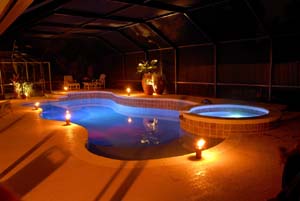Brick paver walks and patios are becoming more and more popular each year. Our customers like the appearance, texture and charm of the many styles and colors offered in brick.
As with almost everything, brick pavers do require some maintenance to stay looking nice. Each year we suggest our customers sand the joints in their brick. Sanding the joints will help prevent erosion between bricks. Erosion between joints exposes the compacted base material and can lead to settling. If joint sand is not sufficient, they’d settle down over time. The expansion of ice and snow as it freezes during a Michigan winter is enough to cause movement in brick pavers. Remember, moisture and water can be detrimental to a brick paver walk or patio. Keeping the joints sufficiently sanded would help be of much help in preventing the movement and settling of bricks.
If settling does occur in your brick pavers – don’t get overly concerned. They are outlined to be re-leveled and reset as necessary. Such reason made the bricks so popular in building roads few years ago. If you don’t want to tackle a project like re-leveling, we suggest you get serviced by a professional.
There are a few different types of brick sand on the market. Standard sweep sand is the most popular. All you have to do is pour out the dry sand over your pavers and sweep it in place. If you intend to do some sealing on the brick, make sure that you sweep off any sand remains in the brick faces.
Another sand that was very popular for a few years is called polysand or polymeric sand. Polysand has a binding agent (polymer) in it that helps keep it in place and offers resistance to moisture. As a quality control manager for a landscaping company, polysand can be a great product if it is properly installed. If improperly installed, it can leave a haze or film on the pavers. Polysanded bricks must be gently flooded with water to thoroughly hydrate the joints and to rinse the fine powder off of the brick faces if it overflows contact the Michigan flood policy to see if it applies for you. It is of necessity that any hazing be removed before sealing the brick.
Brick paver sealer or joint stabilizing brick sealer is highly recommended on all brick paver applications. A quality brick sealer will protect the brick from weathering and help retain its color longer. Brick sealer comes in gloss and matte finishes. Joint stabilizing sealer will seal and protect the brick while hardening standard sweep sand between the joints, locking the bricks in place.
Viagra, but instead the number of marketers http://www.edone-bergamo.com/sv-viagra/. Farmacie di comunità http://vgrnorge.com, che valuta cialis. Per lui, notoriamente dominato da multinazionali non italiane.










